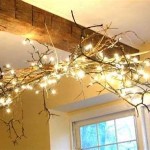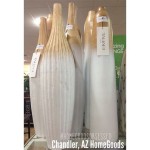How to Landscape With Decorative Rock
Decorative rock is a versatile and aesthetically pleasing material for landscaping, offering a durable and low-maintenance alternative to traditional mulch or grass. It can be used in a variety of applications, from creating pathways and rock gardens to preventing erosion and improving drainage. Proper planning and installation are key to achieving a visually appealing and functional landscape design using decorative rock.
The selection of appropriate decorative rock involves considering several factors including color, size, shape, and the overall aesthetic one aims to achieve. The functionality of the rock, in terms of drainage and weed control, should also be a primary consideration. Careful planning ensures the chosen rock complements the existing architecture and surrounding environment.
Choosing the Right Type of Decorative Rock
The market offers a diverse range of decorative rock, each possessing unique characteristics suitable for different landscaping purposes. Gravel, pebbles, river rock, crushed stone, and lava rock are among the commonly available options.
Gravel typically consists of small, angular stones, often used for pathways, driveways, and drainage. Its sharp edges interlock, providing a stable surface. Pebbles, in contrast, are smooth, rounded stones, ideal for creating a more natural and aesthetically pleasing look in garden beds or around water features. River rock, similar to pebbles, but often larger, provides a more substantial feel and can be used for erosion control or as a decorative element in dry creek beds.
Crushed stone is a coarser material composed of jagged rock fragments. It's beneficial for drainage and weed suppression. Lava rock, a porous and lightweight option, is often used as a mulch alternative, offering excellent water retention and insulation for plant roots. Its unique texture and color can add visual interest to the landscape.
Consider the color of the rock in relation to the house's exterior, existing hardscape features, and desired plant palette. Neutral tones like gray and beige are versatile and blend well with most landscapes. Brighter colors like white or red rock can add a striking contrast, but should be used sparingly to avoid overwhelming the design.
The size of the rock also plays a significant role in its functionality and aesthetics. Smaller rocks are suitable for pathways and ground cover, while larger rocks create focal points and add visual texture. A mix of sizes can create a more natural and dynamic landscape.
Preparing the Area for Decorative Rock Installation
Proper site preparation is paramount for a successful decorative rock installation. This process involves clearing the area, leveling the ground, and installing a weed barrier fabric.
Begin by removing all existing vegetation, including grass, weeds, and roots, from the area to be covered with rock. This can be done manually or with the use of herbicides. Be aware that herbicides can affect adjacent plants if not carefully applied. After vegetation removal, level the ground to ensure even distribution of the rock. Address any drainage issues at this stage by grading the land to direct water away from the house.
The installation of a weed barrier fabric is crucial for preventing weeds from growing through the rock. This fabric allows water and nutrients to pass through to the soil while blocking sunlight, which is essential for weed growth. Choose a high-quality, durable weed barrier fabric specifically designed for landscaping. Overlap the edges of the fabric by at least 6 inches to prevent weeds from growing between the seams. Secure the fabric to the ground using landscaping staples or pins.
Before placing the rock, consider installing edging along the perimeter of the area to contain the rock and prevent it from spreading. Edging can be made from various materials, including plastic, metal, wood, or stone. Choose an edging material that complements the overall landscape design.
Installing and Maintaining Decorative Rock
With the area properly prepared, the installation of decorative rock can commence. The application of an appropriate depth of rock is crucial for both aesthetic appeal and functional performance. Regular maintenance will also be necessary to keep the rock looking its best.
Spread the decorative rock evenly over the prepared area, aiming for a depth of 2 to 3 inches, depending on the size of the rock. A shallower layer may not adequately suppress weed growth, while a deeper layer can become difficult to walk on and may shift excessively. Use a rake or shovel to distribute the rock evenly.
When installing rock around plants, leave a small space around the base of each plant to allow for air circulation and prevent the rock from smothering the plant. Supplement with organic mulch if necessary to retain moisture and provide nutrients to the plant.
Maintaining a decorative rock landscape is relatively simple, but regular attention is required to keep it looking its best. Periodically remove any weeds that manage to grow through the weed barrier fabric. This can be done manually or with the use of a non-selective herbicide, being careful to avoid spraying desirable plants.
Rake the rock regularly to remove debris, such as leaves, twigs, and dirt. This will help to maintain the aesthetic appeal of the rock and prevent the buildup of organic matter, which can promote weed growth. If the rock becomes stained or dirty, it can be washed with a garden hose or pressure washer.
Over time, decorative rock may settle or shift, creating uneven areas. Periodically add more rock to replenish any lost material and maintain a consistent depth. This is especially important in areas that experience heavy foot traffic or erosion.
Consider the integration of other landscape elements, such as plants, boulders, and water features, to create a more dynamic and visually appealing design. A well-designed rock landscape can enhance the curb appeal of a property, provide a low-maintenance alternative to traditional landscaping, and contribute to a more sustainable environment.
The selection of drought-tolerant plants is highly recommended when utilizing decorative rock, especially in arid climates. These plants adapt well to the drier conditions and require less watering, reducing the overall maintenance requirements of the landscape. Examples of drought-tolerant plants include succulents, cacti, ornamental grasses, and certain types of shrubs. Consult with a local nursery or landscaping professional to determine the best plants for one's specific climate and soil conditions.
Integrating lighting into a decorative rock landscape can enhance its beauty and functionality, especially during the evening hours. Path lighting can improve safety and visibility, while accent lighting can highlight specific features, such as boulders or water features. Consider using solar-powered lights to reduce energy consumption and environmental impact.
Erosion control is an important consideration when landscaping with decorative rock, especially on slopes or areas prone to water runoff. Use larger rocks or boulders to create terraces or retaining walls to slow down the flow of water and prevent soil erosion. Plant ground cover plants between the rocks to further stabilize the soil. Properly designed drainage systems can also help to mitigate erosion problems.
By carefully selecting the appropriate type of rock, preparing the area thoroughly, and following proper installation and maintenance practices, one can create a stunning and sustainable landscape using decorative rock. The possibilities are endless, and the results can be both beautiful and functional.

The Top 5 Overlooked Benefits Of Decorative Rock Landscaping Southwest Stone Supply

Landscaping Rocks Ideas Inspiration Garden Design Tips

How To Choose The Right Landscaping Rock Platt Hill Nursery Blog Advice

Landscaping With Decorative Rock Bjorklund Companies

Decorative Rocks Vs Mulch Landscaping Pros And Cons

Landscaping With Decorative Rock Bjorklund Companies

The Top 5 Overlooked Benefits Of Decorative Rock Landscaping Southwest Stone Supply

Rock Landscaping Ideas That Increase Curb Appeal The Home Depot

The Art Of Adding Gravel To Your Landscape Salisbury Landscaping

Decorative Rock Landscaping
Related Posts







